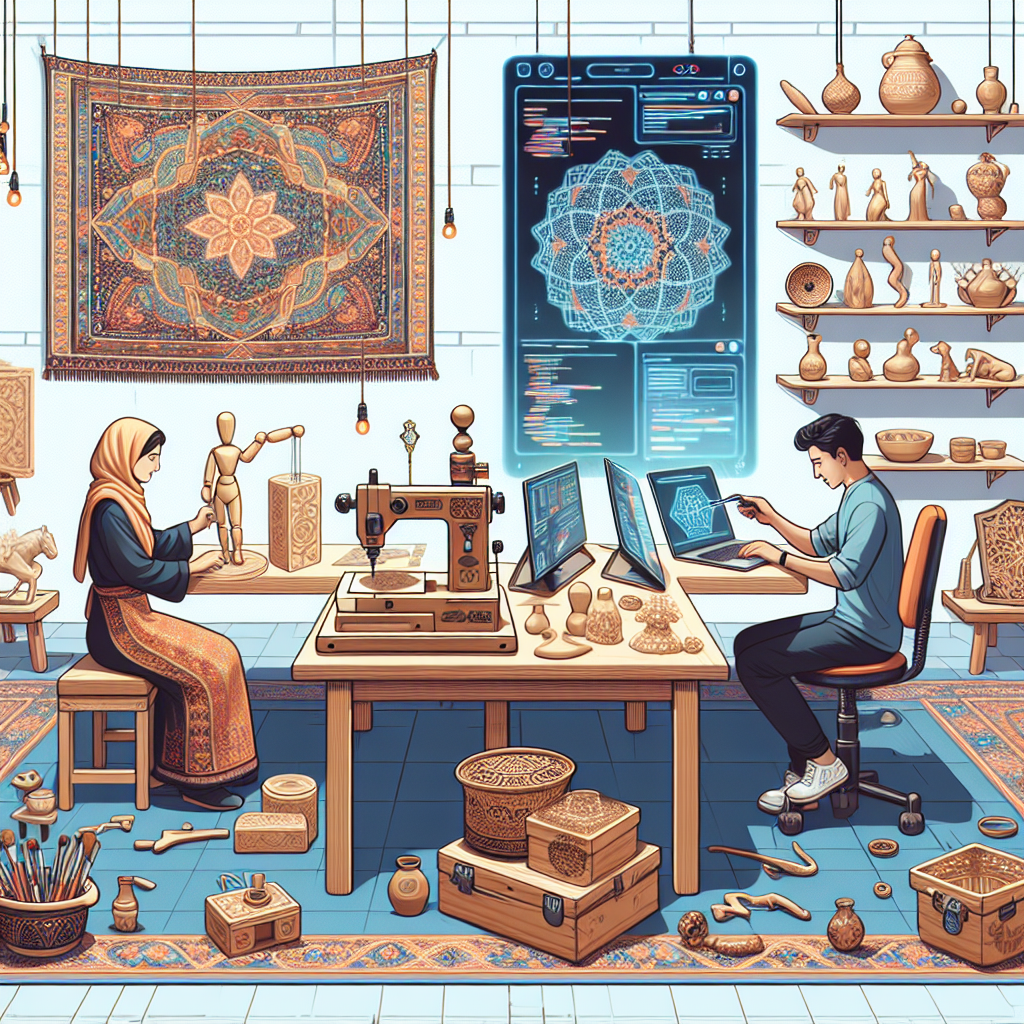In recent years, there has been a growing intersection between artificial intelligence (AI) and craftsmanship, leading to innovative advancements in the world of handmade goods. While traditionally seen as separate realms, technology and artistry are coming together in new and exciting ways, pushing the boundaries of what is possible in the world of artisanal products.
AI and craftsmanship may seem like an unlikely pairing at first glance. After all, one is rooted in the precise calculations and algorithms of computer science, while the other is steeped in the tradition, skill, and creativity of human hands. However, the marriage of these two seemingly disparate worlds has given rise to a host of new possibilities, from streamlining production processes to enhancing the quality and design of handmade goods.
One of the key ways in which AI is revolutionizing the world of craftsmanship is through the use of generative design software. This technology allows artisans to input parameters such as material, size, and function, and then generates a multitude of design options based on those criteria. This not only speeds up the design process but also allows for a level of complexity and intricacy that would be difficult to achieve through traditional methods alone.
For example, a jewelry designer could use generative design software to create a custom piece that perfectly fits a client’s specifications, taking into account factors such as personal style, budget, and material preferences. This level of customization would have been time-consuming and labor-intensive without the assistance of AI, but with generative design software, it can be accomplished quickly and efficiently.
Another way in which AI is impacting craftsmanship is through the use of predictive analytics. By analyzing data on consumer preferences, market trends, and production processes, AI can help artisans make more informed decisions about what products to create, how to market them, and how to optimize their production workflows.
For example, a ceramic artist could use predictive analytics to determine which glaze colors are most popular among consumers, allowing them to tailor their product line to meet market demand. Similarly, a textile designer could use predictive analytics to forecast which patterns and styles will be in vogue in the coming season, helping them stay ahead of the curve in terms of design trends.
In addition to streamlining production processes and optimizing design decisions, AI is also being used to enhance the quality and craftsmanship of handmade goods. For example, some artisans are using AI-powered tools to assist with tasks such as precision cutting, engraving, and polishing, ensuring that each piece is finished to the highest standards of quality.
Furthermore, AI can help artisans identify and correct imperfections in their work, such as uneven stitching or misaligned seams, before the final product is completed. This level of quality control would be difficult to achieve without the assistance of AI, but with the technology’s help, artisans can ensure that each piece meets their exacting standards of craftsmanship.
Overall, the integration of AI and craftsmanship is opening up new possibilities for artisans to create innovative, high-quality products that are tailored to meet the demands of today’s consumers. By leveraging the power of technology, artisans can enhance their creative process, streamline production workflows, and deliver products that are truly one-of-a-kind.
FAQs:
Q: How is AI being used in the world of craftsmanship?
A: AI is being used in a variety of ways in the world of craftsmanship, from generative design software that helps artisans create custom pieces to predictive analytics that assist with decision-making and quality control.
Q: Can AI replace traditional craftsmanship?
A: While AI can enhance and streamline the production process, it is unlikely to completely replace traditional craftsmanship. The human touch and creativity that artisans bring to their work are difficult to replicate with technology alone.
Q: How can artisans benefit from incorporating AI into their work?
A: Artisans can benefit from incorporating AI into their work by speeding up the design process, improving quality control, and making more informed decisions about product development and marketing.
Q: Is AI affordable for small-scale artisans?
A: The cost of AI technology varies depending on the specific tools and software being used. While some AI-powered tools may be expensive, there are also more affordable options available that can provide significant benefits to small-scale artisans.
Q: What are some examples of artisans using AI in their work?
A: Some examples of artisans using AI in their work include jewelry designers using generative design software to create custom pieces, ceramic artists using predictive analytics to determine popular glaze colors, and textile designers using AI-powered tools for precision cutting and quality control.

